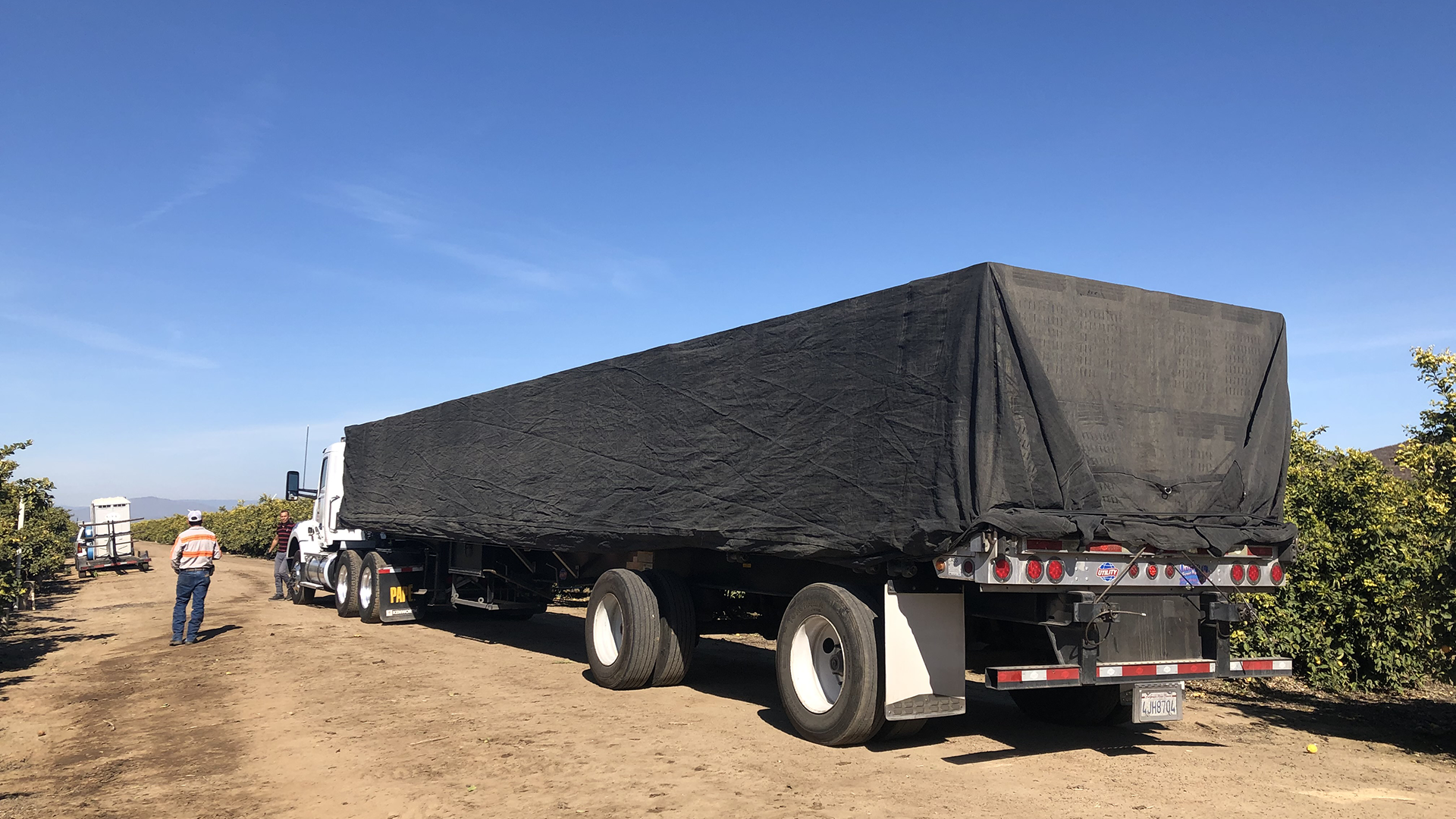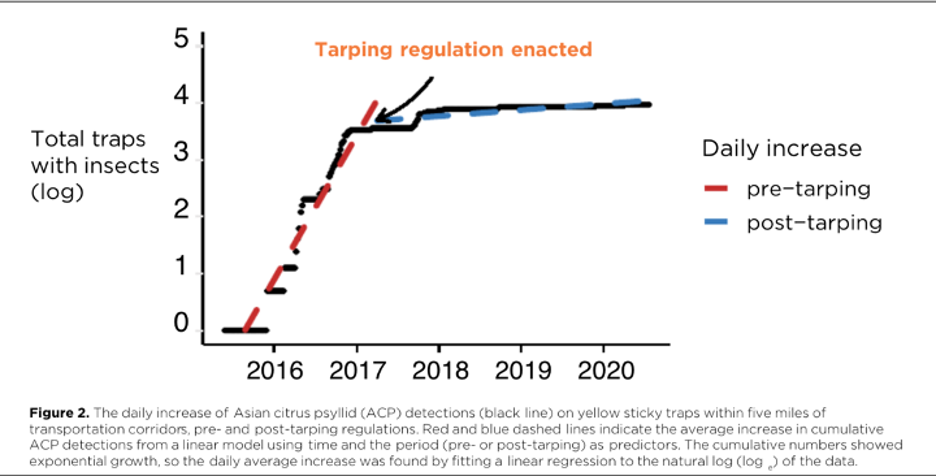DATOC finds regulated tarping practices to be successful in reducing ACP movement

As reported in the DATOC quarterly report and Citrograph Magazine, researchers at DATOC have analyzed Asian citrus psyllid (ACP) trapping data along major transportation routes before and after tarping regulations for bulk citrus shipments were enacted to determine the effectiveness of the policy. The results are very encouraging.
DATOC found a significant reduction in the rate of ACP finds throughout the San Joaquin Valley (SJV) after the introduction of tarping regulations went into effect. The SJV contains more than 70% of California’s packinghouses, and coastal and Southern California counties ship more than 63 million pounds of bulk citrus into the SJV annually for processing. In years past, ACP populations have soared as they presumably “hitchhiked” on trucks that weren’t properly covered, coming from Southern California into the SJV and threatening the livelihood of commercial groves throughout California along the way. However, after the California Department of Food and Agriculture implemented the Citrus Pest & Disease Prevention Committee (CPDPC) recommendation to require tarping in 2017 – including fully covered tarping requirements for transporters – the data from DATOC showcases that the new regulation is accomplishing its intended goal of reducing ACP movement greatly.

Source: DATOC
While this is encouraging news, and a true testament to the work that citrus growers, packers and transporters are investing in to stop ACP movement and the deadly tree disease Huanglongbing (HLB) from taking hold, growers must continue to remain vigilant. In a recent letter from CPDPC chairman Jim Gorden, he stated we could expect to see ACP populations “flare up” occasionally, such as the late 2020 ACP detections in Kern, Madera, San Luis Obispo, Santa Barbara, Santa Clara, Tulare, Contra Costa and other counties. But even when things are quiet, growers, packers, transporters and other stakeholders must put in the work to ensure we continue to stay on top of this elusive pest and the dangerous disease it spreads. The upfront cost to manage ACP is much less than the potential hit to our industry if HLB spreads throughout the state.
In order to move bulk citrus from an ACP regional quarantine zone or a HLB quarantine area under the terms of the permit(s), growers, grove managers, haulers, and harvesters must do the following:
- Sign a compliance agreement and exhibit provided by the ACP or HLB Program.
- Conduct appropriate performance standards to mitigate the risk of moving ACP and HLB and complete the applicable ACP-Free Declaration form or HLB Pest Risk Mitigation form and include an original form with each shipment, if required. Mitigations may also be required prior to movement. See here for more details.
- The ACP-Free Declaration form or HLB Pest Risk Mitigation form must be submitted to your local county agricultural commissioner’s office at least 72 hours in advance of harvest and to the destination county agricultural commissioner’s office at least 24 hours in advance of shipment to ensure the shipment is free of ACP and mitigated for HLB.
- Ensure pallets or field bins are completely tarped or moved in a fully enclosed vehicle.
- Deliver bulk citrus fruit only to a Division-approved packing house or processor. Please contact the local county agricultural commissioner for a list of approved receivers.
- Provide the ACP-Free Declaration form or HLB Pest Risk Mitigation form to the receiving packing house or processor upon delivery.
- For additional details and information on required documentation, visit cdfa.ca.gov/acpgrowerinformation.pdf.
Bulk citrus fruit may be shipped directly to a packinghouse or processor located within a HLB quarantine area without meeting the ACP-free performance standard, provided that the shipment originates from the immediately adjacent, surrounding ACP bulk citrus regional quarantine zone. The fruit may not originate in an HLB quarantine area. All shipments of citrus fruit must continue to be fully safeguarded with a tarp or enclosed vehicle while in transit.
To review the full document for citrus growers and grove managers in an ACP bulk citrus regional quarantine zone or HLB quarantine area, please click here.
